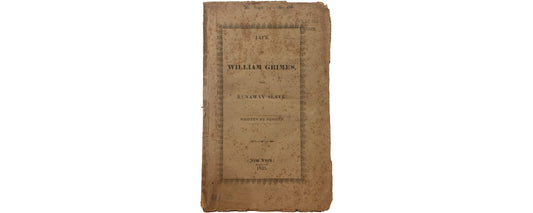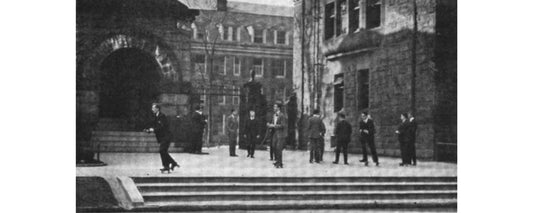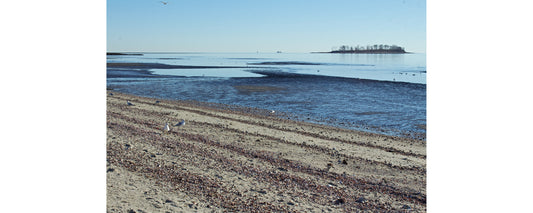Santa (or FedEx) may deliver our Christmas presents, but Christmas trees present them. Festooned and alight, Christmas trees make the Christmas gifts beneath them more inviting and exciting, right up to the final handoff.
Actually, trees are constantly presenting us presents: clean oxygen to breathe and fresh smells to sniff; gnarled things to climb and peaceful places to rest; fuel for heat when it’s cold and cooling shade when it’s hot. They give us creatures that delight us, by giving them places to nest, mingle and, as the need arises, escape danger.
sponsored by
Without their animals, trees would still give us beauty to behold—even at this time of year, when nature’s flashy flowers and leaves are absent. Indeed it’s winter’s nakedness that shows off many deciduous trees’ most impressive structures: strong central columns and twisting, reaching limbs.
For the Puritans who settled New Haven in 1638, celebrating Christmas was blasphemous. Trees gave them gifts anyway. The boats the settlers used to get here were made of timber. So were the makeshift huts and, later, permanent houses the settlers inhabited. (Some of the latter were so large and costly compared to other early colonies’ that one historian of the day, William Hubbard, was provoked to comment on New Haveners’ “error in great buildings.”) So were the fences that marked the edges of their properties. So was the perimeter wall that would be erected around the center of the colony.
A grand oak tree along what was then the West Creek—near the present-day corner of George and College Streets—gave the fledgling colony’s pastor, John Davenport, a choice spot to deliver his first sermon in New Haven. The morning after their arrival, parishioners gathered around the oak to hear warnings of “the temptation of the wilderness,” as Rollin G. Osterweis’s Three Centuries of New Haven (1953) relates it. One of the more literal temptations of New Haven’s wilderness would be settlers’ urge to take too many gifts from its trees, forcing the colony’s early government to prohibit cutting without permission.
sponsored by
A different sort of tree gave New Haven its still-enduring nickname. Dubbed the “City of Elms” sometime before the Civil War, popular opinion converted the appellation to “The Elm City” sometime after. The people most responsible for that eventuality were James Hillhouse and David Austin, “two public-spirited and wealthy citizens” (Charles H. Levermore, The Republic of New Haven, 1886) whose charge to beautify the city, which peaked in the 1790s, would result in the planting of many beloved Elms on the town green and elsewhere. The person who came up with the initial “City of Elms” idea was writer Louisa Caroline Tuthill, a native of the city who, incidentally, authored what is reportedly the first architectural history book published in America: History of Architecture, from the Earliest Times (1848). Both the binding and, perhaps using an innovation developed in Canada in 1844, the paper of the book’s earliest copies might have been made from wood pulp, a.k.a. trees.
In 2012, a specific history-enveloped tree, planted in 1909 to commemorate the birth of Abraham Lincoln—himself forever associated with something else trees gave us: log cabins—gave us back some of our history. Torn up from its spot on the Green by Hurricane Sandy, the roots of the Lincoln Oak, which had extended deep into the ground over the course of its century-plus tenancy, brought human bones with them. It was a special surprise to anyone who didn’t know that, for well over a century, the New Haven Green served as a burial ground in addition to all its other functions, with thousands of skeletons still resting below the surface.
Rising above the surface, for a little while longer, is this year’s city Christmas tree, festooned and, at night, alight. Unlike most of its kind, the presents it presents aren’t wrapped in shiny paper or topped with bows, nor are they addressed to any one recipient. They’re more ephemeral and universal than that, offering us a place to take a picture with friends, or a prompt for kindling the deep-rooted joy of the season, or a reminder that there are experiences and rituals we share with one another simply in virtue of living in the Elm City.
Trees: they give us roots, along with all the rest.
Written and photographed by Dan Mims. Image depicts a beech tree at the base of East Rock Park.









